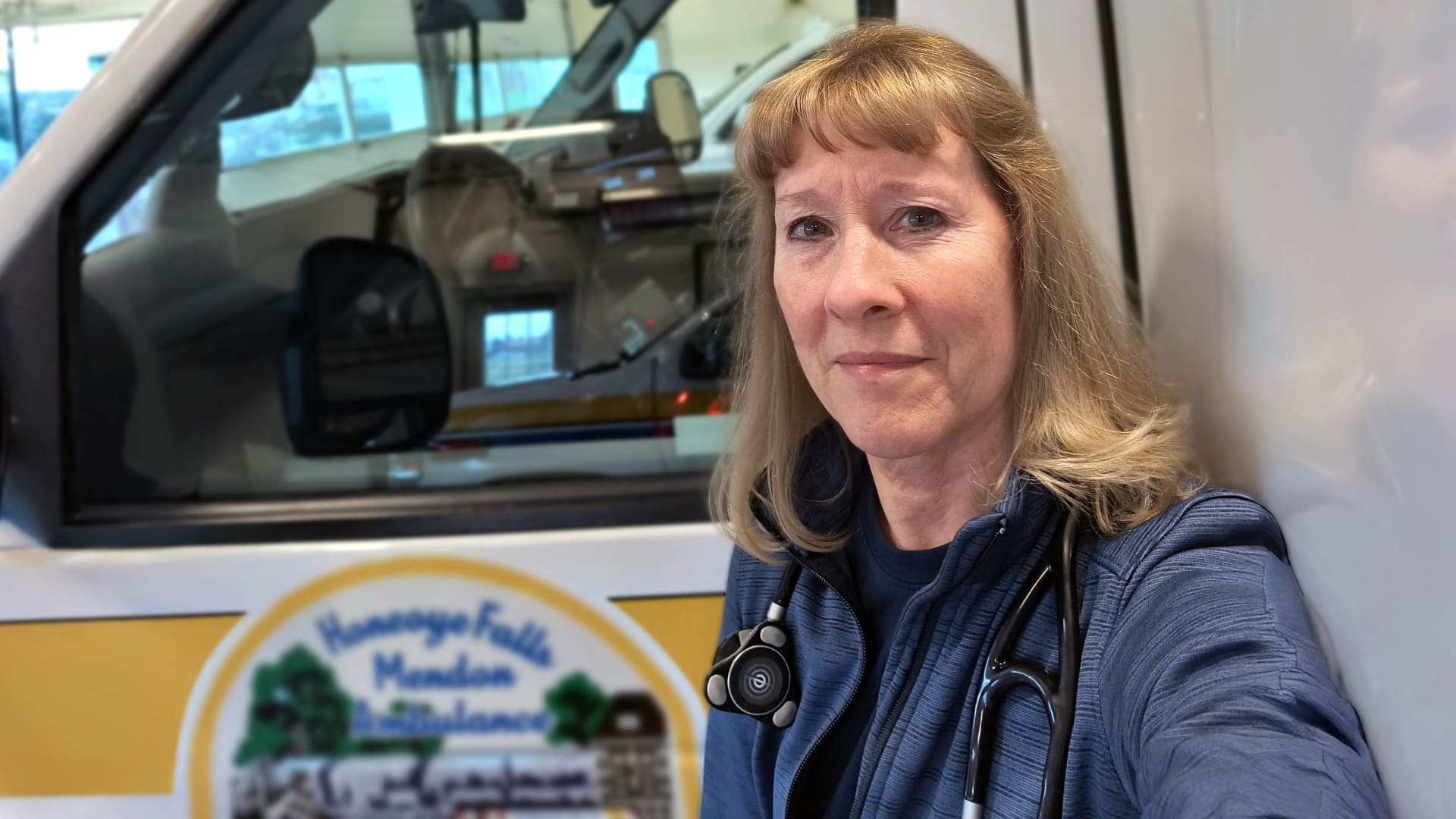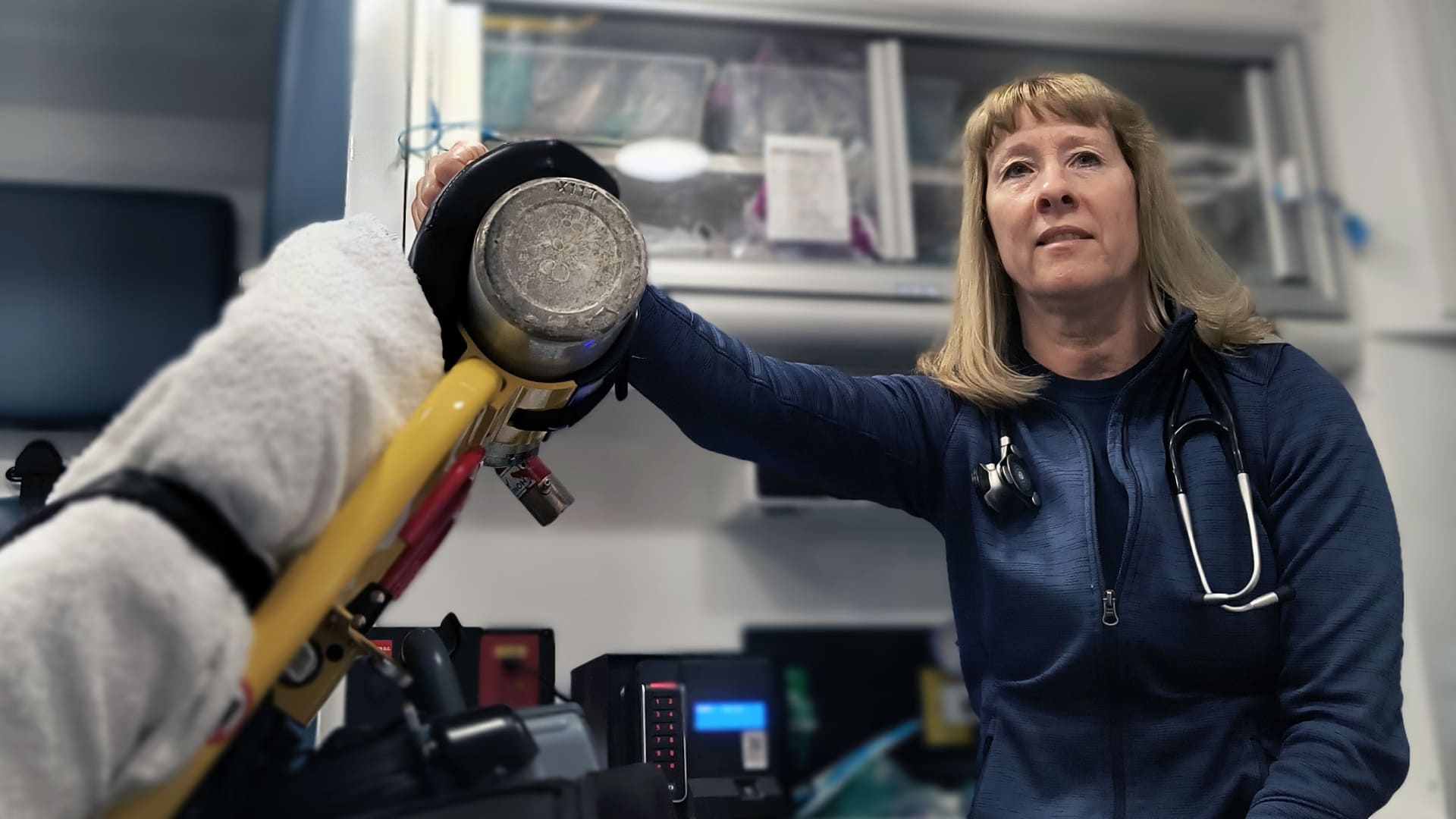In the Field and the Classroom, She Trains the Next Generation
In rural EMS, experience matters. Julie Jordan brings decades of frontline knowledge to both the field and the classroom — caring for patients and preparing the next generation to do the same.

Seventeen years old. Six weeks into her freshman year of college. Julie Jordan wasn’t thinking about becoming a paramedic when she rushed outside to help victims of a car crash near her dorm. But that night, holding injured classmates until the ambulance arrived, changed everything.
“Thankfully, they all survived,” Julie recalls. “But after that,” she wondered, “Did we help? Did we not help?” The experience opened her eyes to a calling she hadn’t yet considered. She knew the victims personally. But it wasn’t just the familiarity — it was the desire to do more that stuck with her.
Julie never looked back.
Now, more than 35 years later, Julie is a highly experienced Advanced Life Support (ALS) Chief Paramedic, a New York State Certified EMS Instructor Coordinator, and an adjunct faculty member at a local community college. She’s built a career defined by resilience, skill, and compassion.
From crisis responder to classroom leader
Julie splits her time between fieldwork and the classroom, managing emergencies across three counties in upstate New York and teaching the fundamentals of emergency care to students from all walks of life.
“The makeup of our EMS students has really changed,” Julie explains. “It’s not just people being sponsored from fire departments or ambulance agencies anymore. Now, it's people going into PA school, medical school, or those who aren’t even sure what they want to do.”
Some come in with military backgrounds. Others have never taken a biology class — or even held a stethoscope. That shift brought a new challenge: how do you teach students to recognize sounds they’ve never heard, using tools they don’t yet understand?
A new way to listen — and learn
Julie turned to the Eko CORE 500™ Digital Stethoscope to help bridge that gap between confusion and clarity.
The difference was immediate, and profound.
Using the CORE 500™, Julie can record real patient sounds in the field and bring them directly into the classroom. Instead of relying on vague descriptions or textbook examples, she can press play and let her students hear exactly what a pulmonary contusion or a heart murmur sounds like.
“It has helped immensely with students at least understanding, ‘What am I hearing? What am I supposed to hear?’” she said.
Critical care in critical moments
The impact of the CORE 500™ extends far beyond the classroom. Julie uses it on every shift — and it’s already proven invaluable in the field.
"Almost every patient I use it on, I catch something that I would not have heard,” she says. “Sometimes it’s very minute, but it still matters."
She recalls one call in particular: a high-speed crash, a car engulfed in flames, two people trapped inside, both with serious injuries. Julie used the CORE 500™ while her partner used a traditional stethoscope.
“I literally could hear a pneumothorax that was 1%,” Julie says. “That was huge.”
Being able to detect subtle, early signs of trouble allows her to act faster, intervene sooner, and adjust care with more precision, especially in high-stakes situations where every second counts.
And with real-time visualization and ECG display, the CORE 500™ gives Julie deeper insight, even in motion, as patients are being transported over long rural distances.
“Almost every patient I use it on, I catch something that I would not have heard,” she says. “Sometimes it’s very minute, but it still matters.”
Treating and transporting smarter
In rural EMS, the stakes are different. Julie’s team regularly transports patients 45 minutes or more. Local hospitals are often at capacity, ICU beds are limited, and decision-making happens quickly.

The CORE 500™ helps Julie determine — with more confidence — whether a patient can go to a nearby community hospital or needs to be taken straight to a larger facility. “It gives us a better exam, faster,” she says. “That makes a difference.”
Because she can record and replay lung and heart sounds, her assessments don’t end in the field. She brings findings back to share with her team, with physicians, and as part of regional clinical discussions. She’s even advocating for Eko’s data-sharing capabilities to be integrated into her EMS system’s charting platform.
Teaching with purpose, leading with focus
Julie’s story is about more than adopting new tools — it’s about how the right technology can improve care, elevate education, and prepare clinicians to make confident decisions under pressure.
What drives her after all these years?
“Knowing that despite the outcome of the call, the patient was given the best opportunity to survive.”
She’s also energized by progress and sees the CORE 500™ as the next logical step in advancing care in the field: a smarter way to auscultate, teach, and treat.
And she’s still hiring her own students.
“I tell them on day one — this is a four-month job interview,” she says with a smile. “And halfway through, they start to get it.”
Raising the bar for EMS
Julie Jordan’s journey — from an uncertain 17-year-old at a crash scene to a respected leader in rural EMS — is defined by adaptability, deep knowledge, and an unwavering focus on patient care.
With the CORE 500™ in hand, she’s improving how care is delivered in the field and raising the standard for how it’s taught in the classroom. Every student who trains with her benefits from the same clarity, precision, and readiness that the device brings to her work.
Julie brings that mindset to every shift, every lesson, and every call — helping the next generation of EMS professionals deliver care with confidence, even in the most unpredictable moments.
MKT-0003761